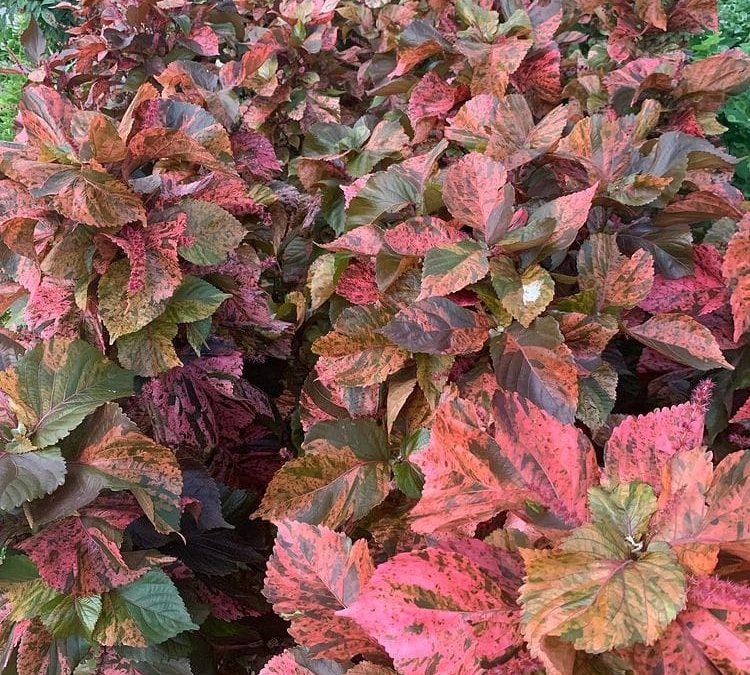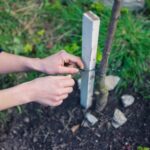Copper plants make a great addition to any garden! One of the perks of this shrub is how easy copper plants care is.
Copper plants are from the family classification Euphorbiaceae, a large group of flowering plants also referred to as the spurge family.
This family classification is so large it includes many species of herbs, shrubs, trees, succulents, and even some varieties of cacti.
Copper plants, or Copper leaves, are scientifically known as Acalypha wilkesiana.
The Copper plant is an evergreen shrub that is quite partial to tropical and subtropical regions. Acalypha comes from a Greek word that refers to the Nettle plant and its similar appearance to that of the Copper plant leaves. The oval or heart-shaped leaves of this adaptable shrub can be found in a variety of color blends ranging from green, yellow, orange, pink, cream, and copper. Additionally, the Copper plant has been harvested for its striking medicinal purposes, such as its ability to treat fungal infections in the skin.
If large quantities of the Copper plant are ingested, you may experience symptoms including nausea, diarrhea, and vomiting. The Copperleaf is brilliantly beautiful and can offer accentuating features and colors to any room of your home. The bright foliage of the Copperleaf makes it a treasured addition to any plant enthusiast’s collection.
Do copper plants need full sun?
Your Copper plant’s location is vital to a healthy and thriving plant. Due to its sub-tropical inclination, the Copperleaf requires full sun to reach its optimal presentation of bright copper-red leaves. It is not detrimental to the plant’s overall health as Copper plants can survive in areas of indirect light or partially shaded areas.
They are, however, most successful when placed in an area that receives bright, direct sunlight and maintains a temperature around 55 degrees Fahrenheit. The importance of placing your Copperleaf in full sun is that it supports the display of more vividly colored leaves. When placing your plant, consider spots in your home that are near windows or that receive plenty of sunlight.
Copper plants are commonly found in tropical regions, including the South Pacific, the tropical zones of the South and North America, as well as certain areas of Southern and Central Florida. Copper plants are incredibly versatile and can thrive in the ground as hedges and even in potted containers.
Is a copper plant annual or perennial?
This abundant shrub is a perennial and does prefer the temperature of warmer climates, where it can flourish all year long. Copper plants are typically considered to be evergreen shrubs that can maintain their leaves throughout more than one growing season. Generally, the Copper plant does not need excessive maintenance. It can survive with its normal waterman sun requirements and rich, fast-draining soil. If you are unsure about the fertility of your soil, you can supplement this with the addition of organic nutrients such as manure or compost.
How big does a copper leaf plant get?
The bulkiness of Copperleaf can allow it to reach heights of up to six or ten feet tall. Additionally, the Copper plant can grow as large as six to eight feet wide. A Copper plant is a rather abundant shrub when it receives the right amounts of sun, water, and soil nutrients. In order to deter any competition for resources between your plants, remember to plant them at least three to five feet apart. We can help design and plan out where to put your copper leaf shrubs so they compliment your yard and home.
Common copper leaf plant diseases
The Copper plant may be a strong and vibrant shrub but does unfortunately become vulnerable to a few pests and diseases that you should be concerned about. Mealy bugs and spider mites will often attack the Copper plant causing a variety of symptoms indicating a sick or dying plant. When the spider mites have attacked your Copper plant, the leaves start to become sticky and turn a pale color. If your Copper plant has a problem with mealybugs, then you will notice white webbing covering the leaves and overall reduced growth due to the fungal infections from the bugs.
Eliminating these pests from your copper plant can be achieved through either chemical pesticides, biological control methods, or natural home remedies. You can correct these occurrences by first removing any damaged or discolored leaves from your Copper plant. You can then use rubbing alcohol or a dish soap mixture to rub on the leaves of your Copper plant to kill off these unwanted pests. After allowing the leaves to sit for a few hours, rinse them off with water, and your Copper plant will be pest-free.
How to prune copper leaf plant
It is important to regularly prune your Copper plant in order to properly maintain or manage your plant’s growth and overall health. The leaves of this bountiful plant can grow large and should be selectively pruned to conserve the Copperleaf’s natural form.
Many suggest pruning your Copper plant in the spring.
Start by pinching the tops off of your Copper plant if you would like your plant to fill out and have bushier growth. This technique will actually encourage growth from your Copperleaf. Proper care and maintenance are essential and will keep your Copper plant growing nice and healthy.
How much water do copper plants need?
One of the Copper plant’s main requirements besides sunlight is the right amount of water to maintain its health and beautiful copper complexion. Copper Plants tend to thrive in moist but not waterlogged conditions. This enduring shrub has been known to survive in drought-tolerant conditions, but it is important to water your Copperleaf several times a week to allow optimal growth and development. Regular watering and misting are essential to providing proper care for your Copper plant. Having a irrigated water system can help keep your plants well watered and thriving.
Copper Plants for Sale
Take advantage of this Copper Plant guide by raising some plants of your own!
Visit our nursery at Troy Tropics and turn your backyard into an outdoor paradise.
Our team of greenery experts can help you decide on the best plants for your home. Contact us through our online form or call us directly at (941) 923-3756.






